Guest post written by Caleb Paul, Volunteer Intern in the UB Special Collections & Archives.
Caleb completed his eight month volunteer internship with the Special Collections & Archives in late June 2019. We are extremely grateful to him for his dedication and hard work processing the Dick V. Cook Papers!
. . .
When it comes to the life of American neighborhoods, many things can change in roughly fifty years, but some things stay the same. The newly processed Dick V. Cook Papers at the UB Special Collections & Archives presents such a window into the history of several Baltimore neighborhoods. We can see the passage of time, but also familiar issues that are still shaping these neighborhoods today.
Ever wondered how your Baltimore neighborhood would appear through the lens of a coloring book? Better yet, what if the coloring book was a unique gem from the early 1970s? The Dick V. Cook Papers contain a coloring book from 1972 of the Greater Homewood area of Baltimore. The coloring book (pictured below) was developed as a messaging tool to assist with organizing the constituent neighborhoods within Greater Homewood. Nowadays, it provides a fascinating window into life in Baltimore during that time.
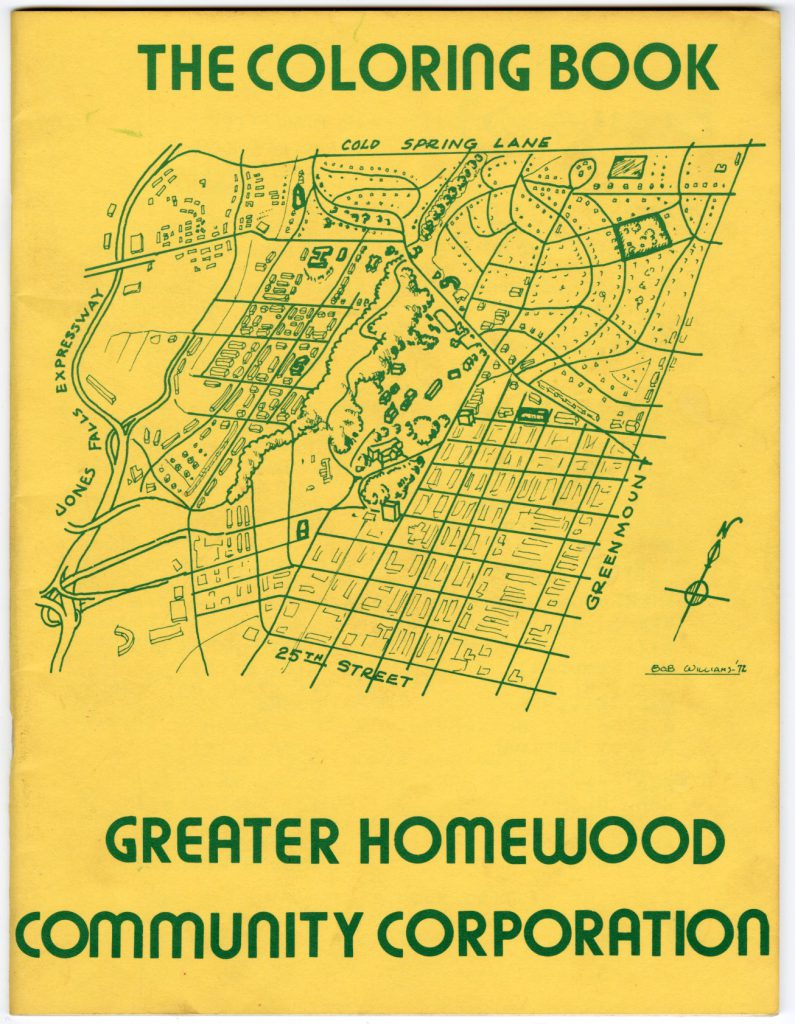
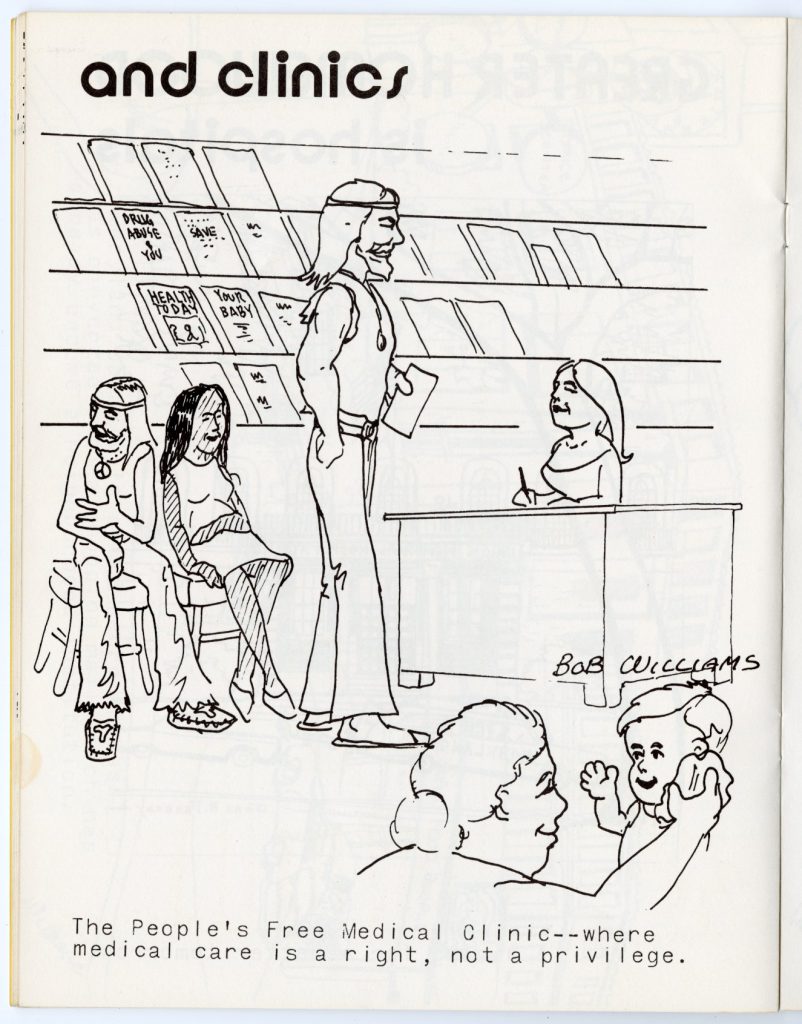
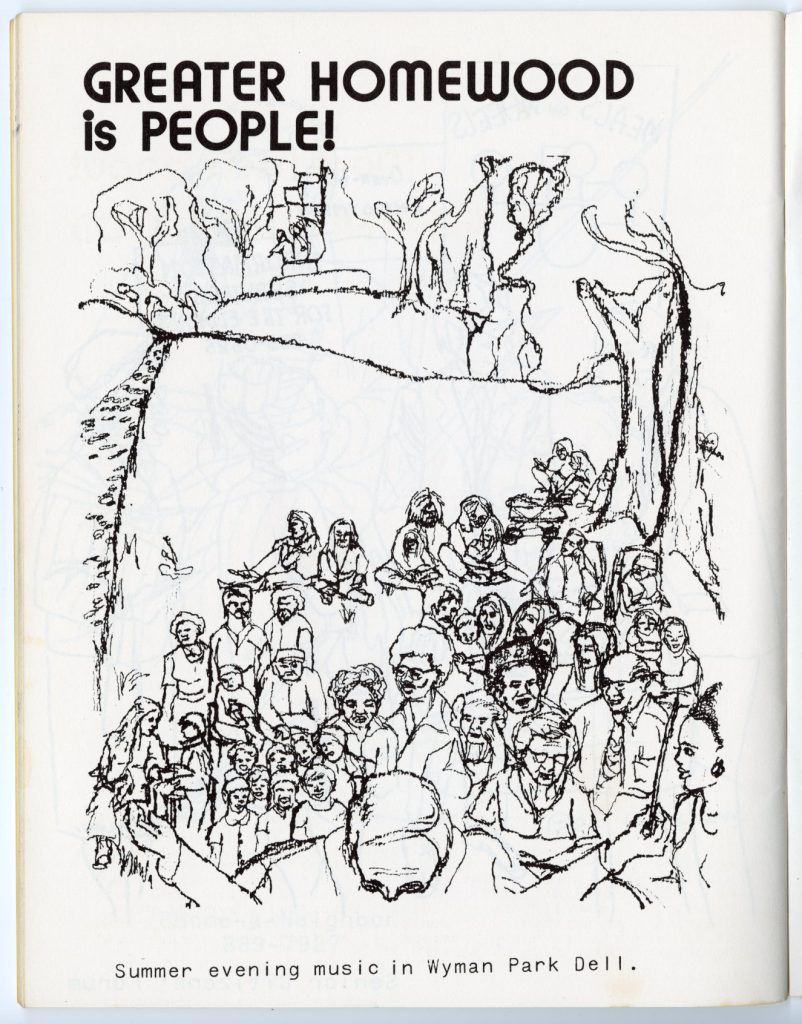
Through other items in the archival collection we can see the development of the Baltimore neighborhoods that make up the Greater Homewood community as we know them today. Today, there is Charles Village Fest or REMfest for Remington; but, back in 1976 there was the Greater Homewood Festival.
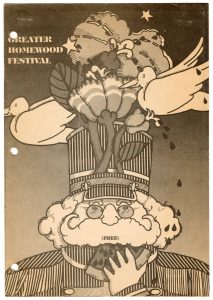
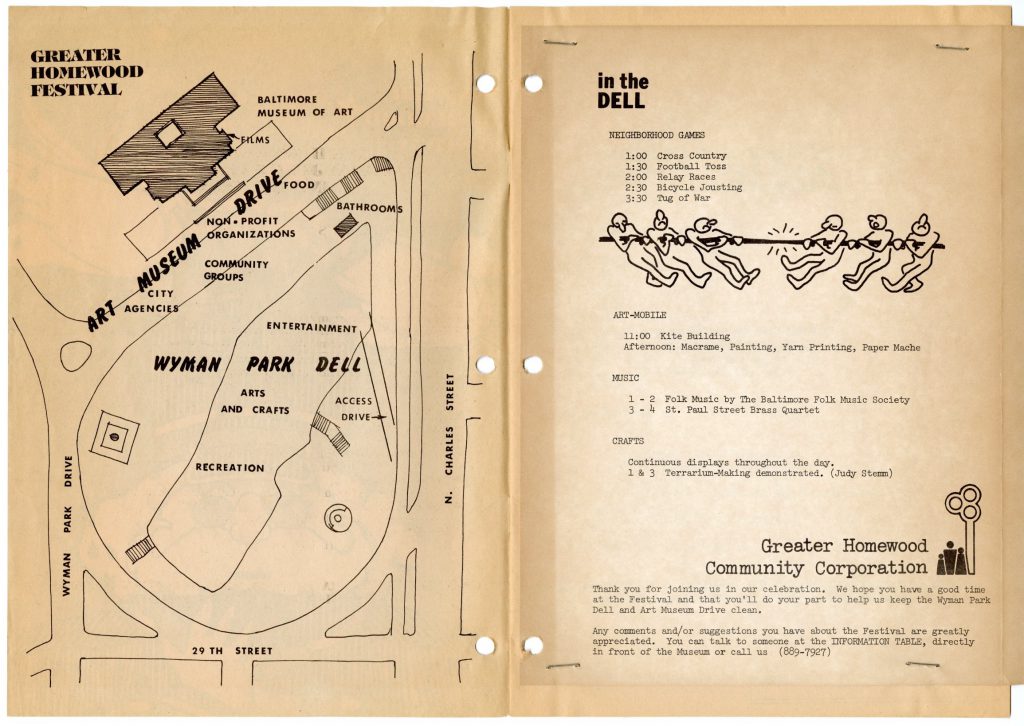
A newspaper clipping of the “Performance” weekly newspaper (below) from 1973 reminds us that Wyman Park was not always the neighborhood outdoor space or dog walking destination it is today. In the early 1970s, it was overgrown, full of trash and abandoned cars, and a concerted effort by neighborhood organizations changed that.
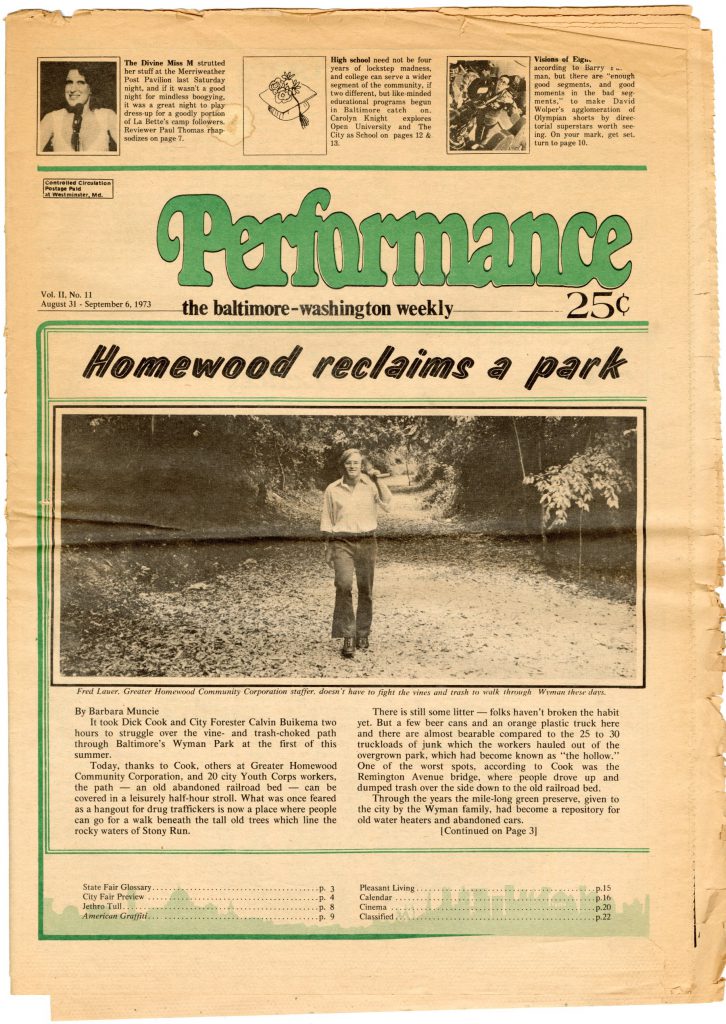
Another clipping from “The Waverly-Charles Village Plain Talker” in 1980 highlights the first appearance of the Waverly Farmers Market, now a neighborhood institution.
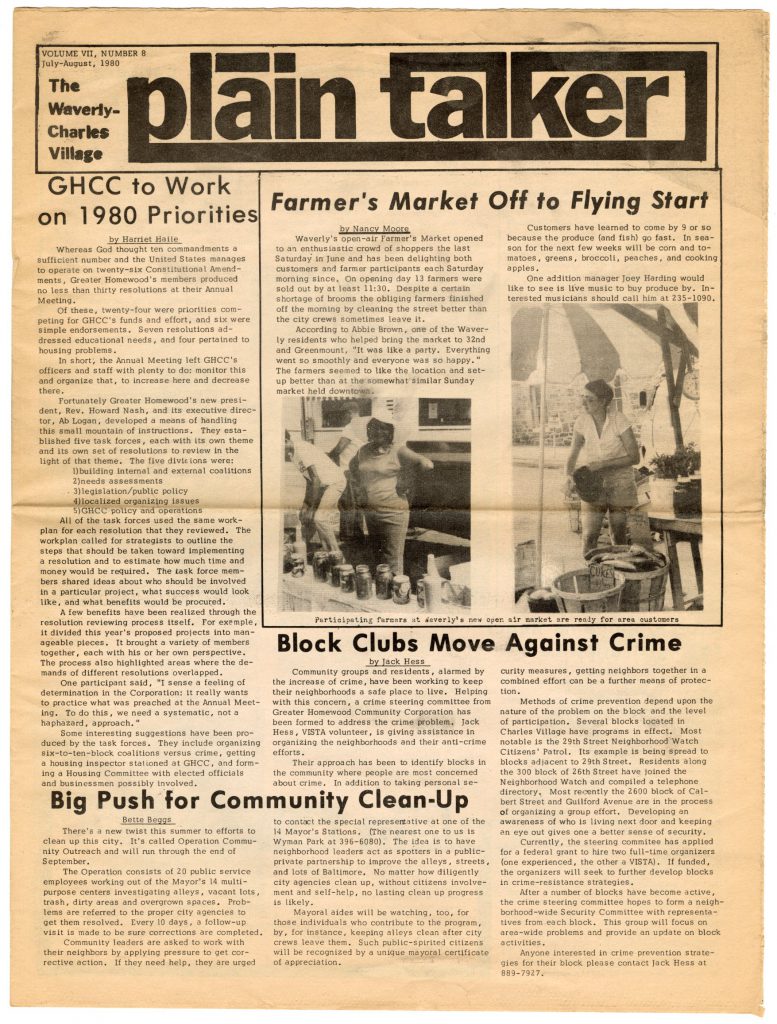
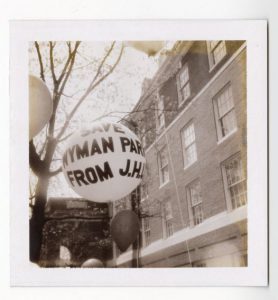
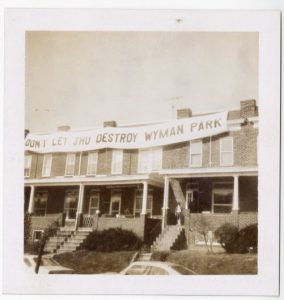
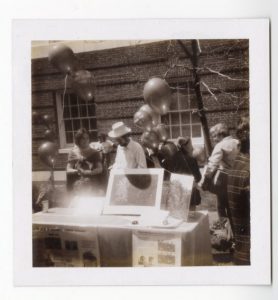
Speaking of institutions, the collection also provides a snapshot of the relationship between the residents of the neighborhoods of Greater Homewood and Johns Hopkins University in the early 1980s. These Polaroid instant film photographs showing a protest against a planned expansion of the University highlight issues still present between neighborhoods and larger institutions.
Local historians and researchers interested in life in an American city in the 1970s, Baltimore neighborhoods, community organizing, the Farmers Market movement, urban renewal issues, and the counterculture, will find these items and photographs interesting, as well as other items in the Dick V. Cook Papers at the UB Special Collections & Archives.
If you would like to view and/or use the Dick V. Cook Papers (or any other archival collections) for yourself, please contact the Special Collections & Archives to set up an appointment!